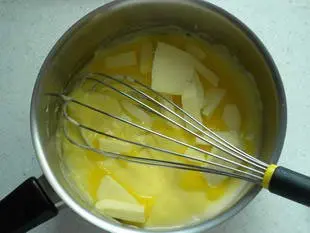This site uses only a few technical cookies necessary for its operation. By continuing to browse, you accept their use.
To find out more...
To find out more...
Creams in pastry

In this post, I propose you to make a small tour of the different creams in pastry.
If you like to make them at home, you have already noticed the many creams that exist for the different desserts: Chantilly, custard, diplomat, Bavarian, etc. etc.
Each one more delicious than the other, they are the keystone of French pastry making, what makes a good part of its success in the world, the basics that any good pastry chef must absolutely master, and a challenge for the amateurs that we are.
If you like to make them at home, you have already noticed the many creams that exist for the different desserts: Chantilly, custard, diplomat, Bavarian, etc. etc.
Each one more delicious than the other, they are the keystone of French pastry making, what makes a good part of its success in the world, the basics that any good pastry chef must absolutely master, and a challenge for the amateurs that we are.
14 K 4.5/5 (17 reviews)
Keywords for this post:PastryCreamsOverviewCustardTourLast modified on: March 12th 2022
Creams in pastry
Let's look at the main creams in the range
I could have listed them one by one, indicating what is in them, but for many of them there is a link, such as for the cream B we start from cream A and add this or that.All this creates a kind of hierarchy in the creams, and that's how I'm going to try to tell you about it.
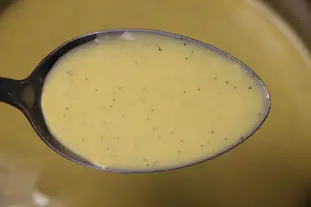 | At the beginning, the mother of all egg-based creams, if you can call it that, is the custard (crème anglaise in french) It's a simple recipe: milk, sugar, egg yolks and vanilla, cooked gently until smooth, that's all. Example of use: Profiteroles. |
Then there are the creams that contain custard, which are :
| 1) Bavarian cream = Custard + gelatin + whipped cream: In the hot custard, add gelatin, let it cool, then gently add whipped cream. Example of use: Various cakes and desserts. | |
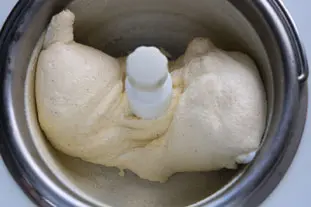 | 2) Ice cream (or vanilla ice cream) = Custard + fresh cream: In the cold custard, fresh cream is added, then the mixture is blended in an ice cream maker. Example of use: Various ice creams or ice cream. |
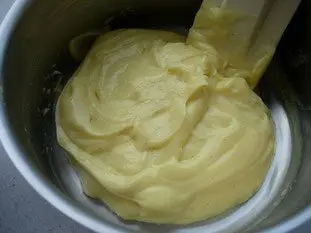 | 3) Pastry cream = Custard + cornstarch: Cook until boiling, you get a much thicker cream. Example of use: To garnish éclairs. |
Then the creams, based on custard :
| 4) Crème mousseline = Pastry cream + butter: In the hot pastry cream, add butter and whip vigorously to aerate. Example of use: A strawberry cake. |
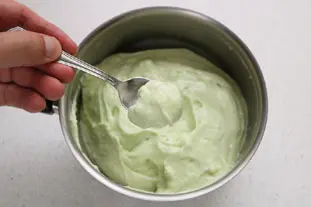 | 5) Chiboust cream = Pastry cream + meringue: In the cold pastry cream, we add raw meringue (French or Italian) and we incorporate delicately. Example of use: A saint-honoré. |
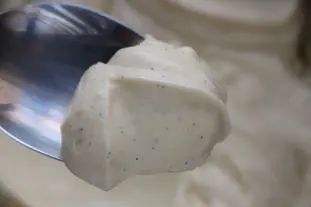 | 6) Diplomat cream = Custard + gelatine + whipped cream: Add gelatine to the hot custard, let it cool, then gently fold in whipped cream. Example of use: Various cakes and entremets (the diplomat cream is so good that it's impossible to resist...). |
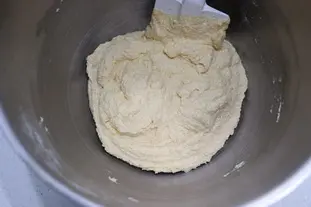 | 7) Frangipane cream = Pastry cream + almond cream: In the almond cream, cold pastry cream is added. Example of use: Filling of galette des rois with frangipane cream. |
To complete the table, 2 other creams related to the previous ones:
 | 8) Whipped cream = Crème fraiche + sugar: In the cold crème fraiche, we add sugar, we whip to make it rise. Example of use: Cream puffs. Tip: replace half of the crème fraiche with mascarpone, even more delicious and more stable over time. |
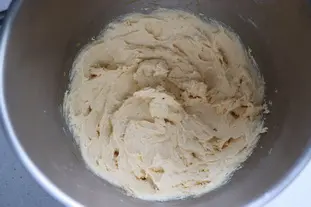 | 9) Almond cream = Almond powder + butter + eggs + sugar + cornstarch + rum: We mix all the ingredients with a mixer to aerate the whole. Example of use: Topping of galette des rois with almond cream. |
There are still many others, but with these alone you already have a tasty panorama of what is possible in pastry.
Let's add to this that, in addition, you can vary the flavors, if at the beginning it is often vanilla flavor, each cream can be declined in delicious variations as chocolate, coffee, fruits, alcohols, herbs, the only limit is your imagination, which is still pleasant.
By the way, when I say that these creams are a challenge for a pastry chef, it's because they are not that easy to make, you have to be precise and very careful, you quickly over or under cook.
The custard, if it is the origin of everything, is thus quite delicate to succeed perfectly, especially at the beginning: not cooked enough it is vanilla milk, and too much it is full of lumps.
And to finish, here is a little diagram that summarizes the links between these creams:
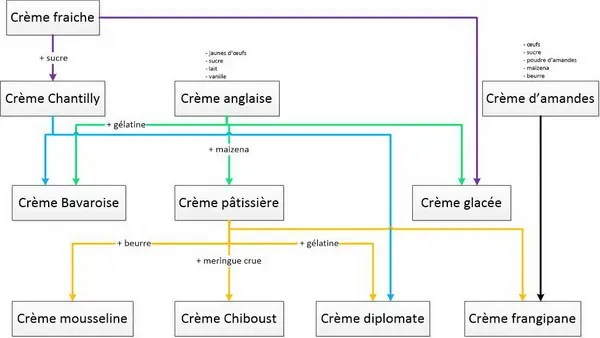
Lasts posts
Butter vs. grease
We often read in a recipe where a pastry is put into a mould that, just before pouring, the mould should be buttered or greased. But what's the difference between these 2 terms?December 1st 20258615
Getting out of the fridge early
Very often when you're cooking, you need to take food or preparations out of the fridge, to use them in the recipe in progress. There's nothing tricky about this: you just take them out of the fridge and use them, usually immediately, in the recipe. But is this really a good method?November 24th 20251,0395
Who's making the croissants?
When you look at a bakery from the outside, you naturally think that in the bakery, the bakers make the bread, and in the laboratory, the pastry chefs make the cakes. It's very often like that, with each of these professions having quite different ways of working, but sometimes there's also one...November 23th 2025934
Oven height
When we put a dish or cake in the oven, we naturally tend to put it on the middle shelf, and that's what we usually do. But in some cases, this position and height can be a little tricky, so let's find out why.October 8th 20252,5815
The importance of sieving
In recipes that use a fine powder (flour, powdered sugar, etc.), you'll often see the advice to sift before using it. To sift is to pass the powder in question through a sieve (a very fine strainer) before incorporating it into your recipe. It's often advice, but is it really useful?September 3rd 20257,4373
Other pages you may also like
Cleaning endives
If you buy your endives elsewhere than in supermarkets, and in this case the best is of course from a market gardener, he or she is the one who planted and harvested them, in this case you will have endives full of earth or sand, depending on where they were grown, which is normal and reassuring, we...March 24th 202026 K4.6
The color of the bread crumb
When you go to buy bread, at your baker's, at the time of the choice, if you hesitate of course, you will undoubtedly be very sensitive to the color of the crust, and you will be right. The color of the crust, from golden, to sometimes very dark, deep brown almost black, depending on the maturity...April 30th 202221 K4.6
The window-pane test in bread-making
The home bread-makers often ask themselves “Have I kneaded my dough long enough?” . A good question, as dough that is insufficiently kneaded will not rise properly or will fall flat when the top is slashed, which is very frustrating. To know when the dough is ready, one can rely on the length...June 16th 202196 K 23.9
Steam for baking bread
What does steam have to do with bread-making? This is not only a bakers' secret, it is something you might not think of at all: if you make bread and bake it like a cake, you will end up with bread, but pale and with a thick, hard crust – a long way from the golden-brown crusty loaf you had in...June 16th 2021146 K4.5
The green of leeks
We are all, consciously or not, very sensitive to the colour of our food. That's why a red strawberry will always seem more appetizing than a pale one, even if it's not necessarily true. This is true for red, but it is also true for the green of certain vegetables.March 30th 202020 K4.0
Post a comment or question
Follow this page
If you are interested in this page, you can "follow" it, by entering your email address here. You will then receive a notification immediately each time the page is modified or a new comment is added. Please note that you will need to confirm this following.
Note: We'll never share your e-mail address with anyone else.
Alternatively: you can subscribe to the mailing list of cooling-ez.com , you will receive a e-mail for each new recipe published on the site.
